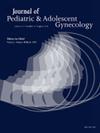癫痫和智力残疾青少年家长/监护人在避孕决策方面的偏好和经验。
IF 1.8
4区 医学
Q3 OBSTETRICS & GYNECOLOGY
引用次数: 0
摘要
目的:探讨育龄期癫痫伴智障青少年(AYA)家长/监护人在避孕决策方面的偏好。方法:我们对一家三级儿童医院招募的12-28岁合并癫痫和ID的女性aya的父母/监护人进行了半结构化访谈。我们与患者的神经科医生和家长/监护人确认癫痫和ID的诊断。所有程度的ID(如轻度/中度/重度)均符合条件。我们对采访进行录音和抄写。两名编码员进行了定性专题分析。结果:25名家长/监护人完成访谈。主题包括:1)父母/照顾者对孩子避孕的愿望更多地集中在与月经有关的问题上,而不是预防怀孕;2)许多父母担心避孕对孩子的潜在副作用,包括风险可能大于收益的观念;3)避孕决策中一个常见的重要因素是易于管理,通常首选药丸形式;4)如果选择长效方法,则主要是由于信任医疗保健提供者的建议而选择的,但通常由于认为出现问题时可逆性较低以及在交付或放置方面面临更大挑战而担心。结论:研究结果可能为干预措施提供信息,以改善癫痫和ID患儿的避孕护理,包括为父母/照顾者制定讨论指南和决策辅助工具。本文章由计算机程序翻译,如有差异,请以英文原文为准。
Preferences and Experiences of Parents/Guardians of Adolescents and Young Adults with Epilepsy and Intellectual Disability Regarding Decision-Making Surrounding Contraception
Objective
To explore the preferences of parents/guardians of adolescents and young adults (AYAs) of childbearing potential with co-occurring epilepsy and intellectual disability (ID) regarding decision-making on contraception
Methods
We conducted semi-structured interviews with parents/guardians of female AYAs (12-28 years old) with co-occurring epilepsy and ID recruited from a tertiary-care children’s hospital. We confirmed the diagnoses of epilepsy and ID with the patient’s neurologist and parent/guardian. All degrees of ID (eg, mild/moderate/severe) were eligible. We audio-recorded and transcribed interviews. Two coders performed qualitative thematic analysis.
Results
Twenty-five parents/guardians completed the interviews. Themes included the following: (1) Parents’/caregivers’ desire for birth control for their child was more centered around menstruation-related concerns rather than pregnancy prevention; (2) many parents were afraid of potential adverse effects of contraception for their children, including perceptions that risks might outweigh benefits; (3) a common important factor in contraceptive decision-making was ease of administration, and, generally, the pill form was preferred; (4) longer-acting methods, if chosen, were largely selected due to trusting recommendations from health care providers yet were often feared due to perceptions of lower ease of reversibility if problems arise, as well as greater challenges in delivery or placement.
Conclusion
Findings may inform interventions to improve contraceptive care for AYAs with epilepsy and ID, including development of discussion guides and decision aids for parents/caregivers.
求助全文
通过发布文献求助,成功后即可免费获取论文全文。
去求助
来源期刊
CiteScore
3.90
自引率
11.10%
发文量
251
审稿时长
57 days
期刊介绍:
Journal of Pediatric and Adolescent Gynecology includes all aspects of clinical and basic science research in pediatric and adolescent gynecology. The Journal draws on expertise from a variety of disciplines including pediatrics, obstetrics and gynecology, reproduction and gynecology, reproductive and pediatric endocrinology, genetics, and molecular biology.
The Journal of Pediatric and Adolescent Gynecology features original studies, review articles, book and literature reviews, letters to the editor, and communications in brief. It is an essential resource for the libraries of OB/GYN specialists, as well as pediatricians and primary care physicians.

 求助内容:
求助内容: 应助结果提醒方式:
应助结果提醒方式:


